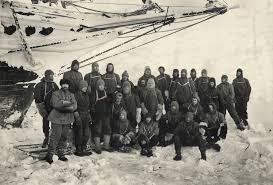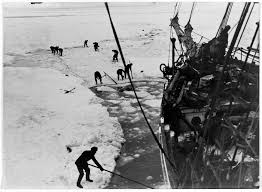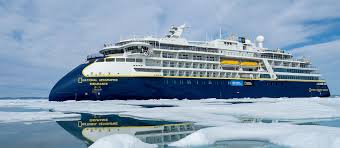Endurance traveling, also known as extreme or adventure traveling, is a unique form of exploration that pushes the limits of physical and mental endurance. Unlike traditional vacations, which often focus on relaxation and leisure, endurance traveling involves challenging oneself in remote, rugged, or physically demanding environments. Whether trekking through harsh landscapes, braving extreme climates, or embarking on long-distance journeys, endurance travelers seek to test their limits, push past boundaries, and experience the thrill of adventure in its rawest form.
See here to get more tips: https://www.tiktok.com/@endurancegrand/video/7351916904006651142
Characteristics of Endurance Traveling

Physical Challenges: Endurance traveling often involves physically demanding activities such as long-distance hiking, mountain climbing, cycling, or ultra-distance running. These activities require participants to possess a high level of physical fitness and stamina to overcome obstacles and reach their destination.
Mental Resilience: Endurance traveling also tests mental resilience, as travelers must cope with discomfort, uncertainty, and adversity along the way. From enduring extreme weather conditions to navigating unfamiliar terrain, mental strength is essential for overcoming challenges and pushing through moments of doubt or fatigue.
Remote and Extreme Environments: Endurance travelers often seek out remote, wild, or extreme environments where few others venture. This might include traversing deserts, crossing polar regions, or exploring deep wilderness areas far from civilization. These environments present unique challenges and require careful planning, preparation, and self-reliance.
Solo or Small Group Expeditions: While some endurance travelers embark on solo expeditions to test their individual limits and self-reliance, others prefer to travel in small groups or with experienced guides for safety and camaraderie. Group dynamics can play a crucial role in managing challenges and providing support during difficult moments.
Personal Growth and Discovery: Endurance traveling is not just about physical feats or conquering obstacles; it’s also a journey of personal growth and self-discovery. By pushing beyond their comfort zones, endurance travelers gain a deeper understanding of themselves, their capabilities, and their connection to the natural world.
Environmental Awareness: Endurance travelers often have a strong appreciation for the environment and a desire to explore and protect natural landscapes. They strive to minimize their impact on fragile ecosystems, practice Leave No Trace principles, and promote sustainable travel practices that preserve wilderness areas for future generations.
Examples of Endurance Traveling

Cross-Country Cycling Expedition: Cyclists embark on long-distance journeys, often spanning thousands of miles, across diverse landscapes and challenging terrain.
Ultra-Marathon Racing: Endurance athletes participate in foot races that exceed the standard marathon distance of 26.2 miles, often covering 50 kilometers (31 miles) or more in a single race.
Thru-Hiking a Long-Distance Trail: Hikers tackle iconic long-distance trails such as the Appalachian Trail, Pacific Crest Trail, or Camino de Santiago, trekking hundreds or even thousands of miles over several weeks or months.
Polar Expeditions: Adventurers journey to the Arctic or Antarctic regions to ski, sled, or trek across polar ice caps, enduring extreme cold, harsh weather conditions, and isolation.
Desert Crossing: Travelers undertake expeditions to traverse vast desert landscapes on foot, camel, or bicycle, navigating sand dunes, rocky terrain, and searing temperatures.
Endurance traveling is not for the faint of heart, but for those who dare to push their limits and embrace the spirit of adventure, it offers the opportunity to embark on unforgettable journeys of exploration, discovery, and personal growth.
Training and Preparation
Endurance traveling requires careful training and preparation to build physical fitness, endurance, and resilience. Training regimens may include strength and endurance exercises, long-distance practice sessions, and mental conditioning to prepare for the rigors of the journey ahead. Familiarizing oneself with navigation, survival skills, and emergency procedures is also essential for safe and successful travel.
Risk Management
Endurance travelers must assess and manage risks associated with their chosen activities and environments. This includes understanding potential hazards such as inclement weather, wildlife encounters, navigation errors, or medical emergencies, and taking appropriate precautions to mitigate these risks. Travelers should have contingency plans in place and be prepared to adapt to changing conditions or unforeseen challenges.
Respect for Local Cultures and Environments
Endurance travelers should approach their journeys with respect and humility, honoring the cultures, traditions, and environments they encounter along the way. This may involve seeking permission from local communities before traveling through their lands, adhering to cultural norms and customs, and minimizing their impact on natural ecosystems through responsible travel practices.
At the end of a long journey, endurance travelers often celebrate their accomplishments and reflect on the experiences and lessons learned along the way. Whether it’s reaching a summit, completing a race, or achieving a personal milestone, these moments of triumph are a testament to the determination, perseverance, and indomitable spirit of the human adventure.
Read More: https://placesandlifestyle.com/embark-on-an-epic-road-trip/




